Estimated reading time 18 minutes, 40 seconds.
Four newly-minted pilots, each roughly a year or less removed from receiving their coveted Royal Canadian Air Force (RCAF) wings, now face the toughest course of their careers to date.
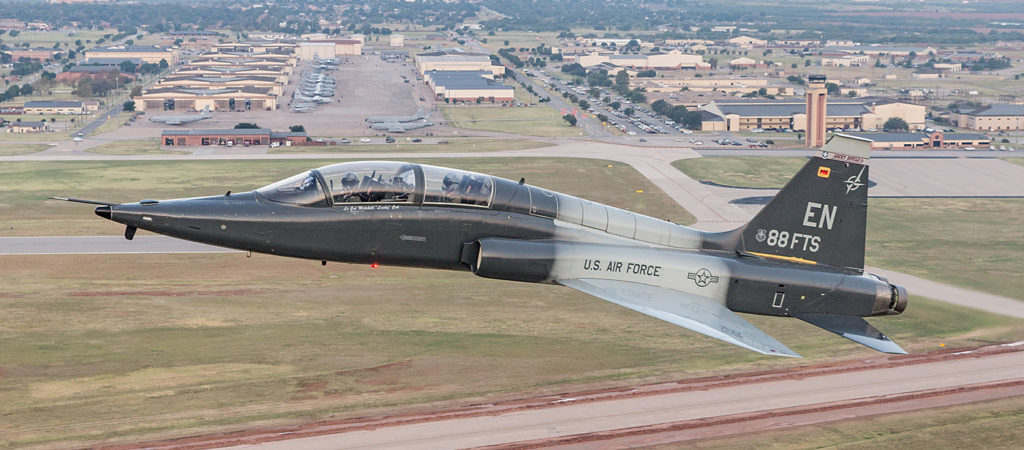
Like all aspiring fighter pilots, they must prove their mettle on a fighter lead-in course, mastering flying and fighting in a training jet before they can earn a shot at a front-line fighter. But unlike most of their RCAF peers, the aircraft they strap into each day isn’t the CT-155 Hawk. Instead, they spool up the dual J-85 engines of the USAF’s T-38 Talon–a legendary trainer capable of reaching 1.3 times the speed of sound.
Their proving ground is not the skies over Saskatchewan or Alberta but over Sheppard Air Force Base, five miles north of Wichita Falls, Texas. Here they’ll spend the next nine to 10 months enrolled in the Euro-NATO Joint Jet Pilot Training Program, or ENJJPT. This program will refine them into even more capable pilots; and, most importantly, get them ready to make the big jump to the CF-188 Hornet.
But ENJJPT is a course unlike anything they’ve seen up to this point in their careers, and getting to the finish line will be the challenge of a lifetime.
The Euro-NATO Joint Jet Training Program is hosted at the 80th Flying Training Wing (80th FTW) at Sheppard Air Force Base. It provides flight training to student pilots from nine NATO partners: Canada, Germany, Italy, the Netherlands, Norway, Belgium, Turkey, Denmark, and the United States. Greece and Spain provide instructors, and the United Kingdom, Portugal, and Romania act as non-active signatories. While hosted at an American base and having an American commander, 80th FTW staff is quick to point out that ENJJPT is not an American program, but an international one managed by all the participating nations. While there are other NATO flight training programs, such as NATO Flying Training in Canada (NFTC), ENJJPT’s fully international management structure is unique.
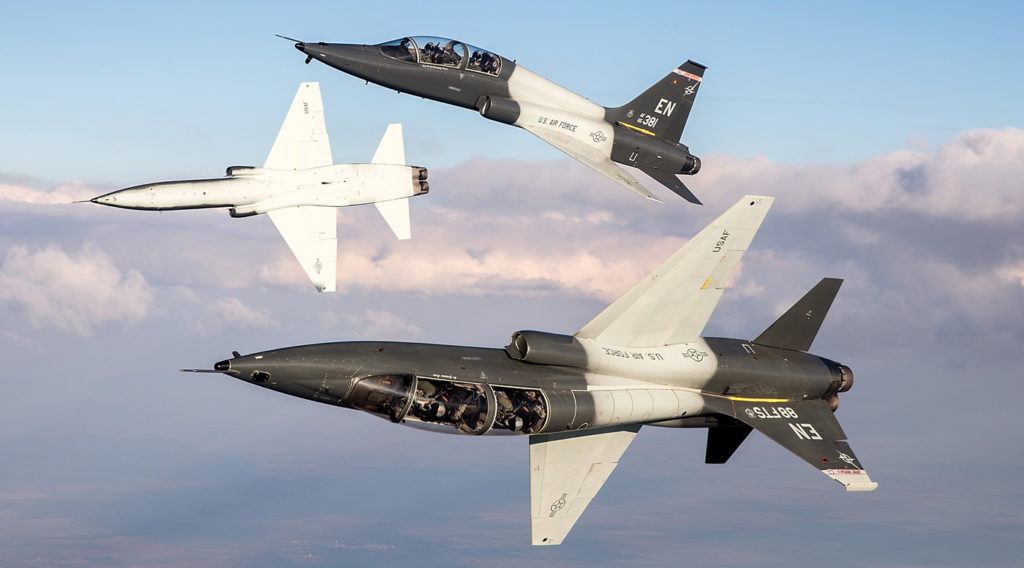
The program’s seeds were planted in the mid-1960s when the West German Air Force purchased a small fleet of T-37 and T-38 training jets and began sending pilots to train at Sheppard to make use of the relatively pristine weather–averaging 244 sunny days per year. Based on the success of that German training initiative, the expanded ENJJPT program as it is known today was formally stood up in 1981. Since then, the program has pinned wings on over 7,400 pilots and counting.
The ENJJPT syllabus consists of a number of phases flown on the T-6A Texan II and T-38 Talon. New students begin with Undergraduate Pilot Training (UPT), the longest portion of the course consisting of three phases. The first phase of UPT is five weeks long and involves 134 hours of ground training and six simulator sorties to prepare students for their initial training on the T-6. Phase two takes place on the Texan and involves a further 204 hours of ground training, 34 sim missions, and 78 sorties totalling 105 hours. Once students have conquered the T-6, it’s on to the T-38. Phase 3 spans a further 24 weeks, with 137 more hours of ground training, 36 sim sorties, and 79 trips in the Talon, totalling 90 hours in the air.
Upon completion of phase 3 on the T-38, students are awarded USAF pilot wings–and they’re hard earned. When all is said and done, students who complete the full UPT program will have pounded out 475 hours of ground training, 99 hours in sims, and 195 hours in the air, all in roughly a year. That’s intensive, to say the least. It also isn’t the end of the line.
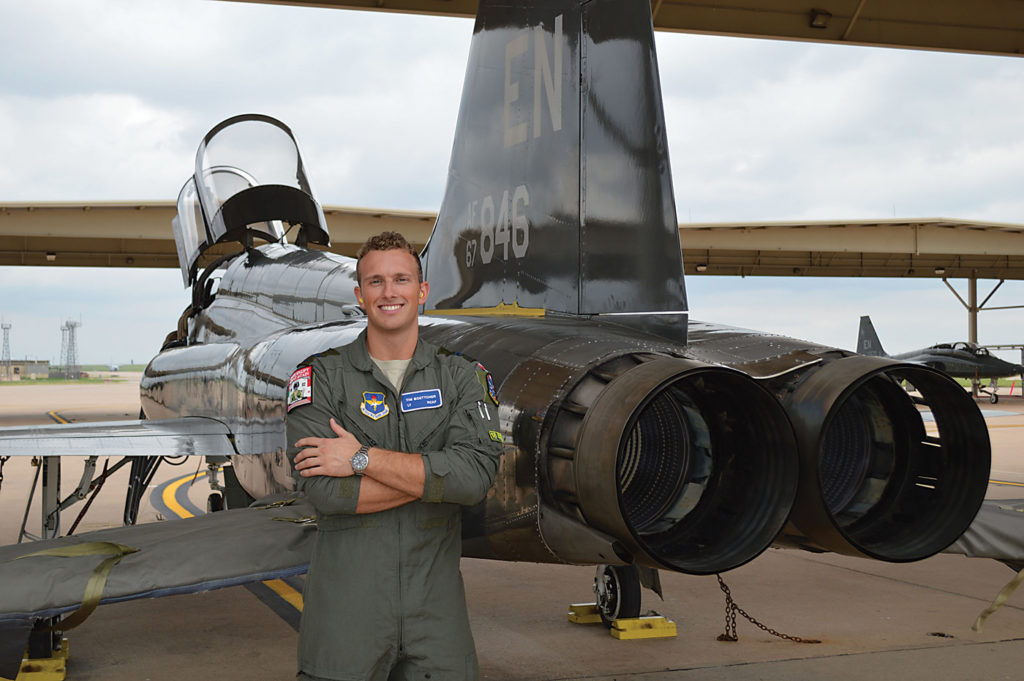
Students selected to move on to fighters then go on to fly the Introduction to Fighter Fundamentals (IFF) course, where they’ll begin learning the actual fighting component of being a fighter pilot. That nine-week course consists of another 80 hours of academics, nine sim sorties, and 16 intense sorties in the air.
The IFF portion of the ENJJPT syllabus is likely to be the most demanding part of the course for most students. Not only are the days long and the flow of information relentless, but the missions the students fly are also incredibly physically demanding, thanks to the constant Gs they pull while trying to get the best of the instructors flying as their opponents.
This is the first time the students will strap into a jet with the intention of learning to use it as a weapons delivery platform, the sole reason a fighter jet exists. That’s a serious responsibility, and the students don’t take it lightly, spending hours preparing, briefing, and debriefing their missions in addition to the time they actually spend flying. Lt Tim Boettcher, a recent Canadian IFF grad, outlined what an average day might look like for an IFF student.
“Your schedule on IFF could vary greatly depending on what time of day your mission would be scheduled for, and what type of mission; however, most often I would be scheduled on the first of four waves per day,” said Boettcher. “This would entail waking up around 04:15, heading into work at 05:00, prepping a briefing room, getting the latest weather, NOTAMs, and co-ordination with the range (if a surface attack mission), and being all set to brief with your flight lead and back-seater (two instructors) for 06:10.

“You’ll brief until 07:10, at which time you will step to your flight’s jets for a 07:45 takeoff. The flights last anywhere from 40 minutes to 65 minutes. After which, you will set up the debrief rooms, and debriefs generally last anywhere from 1.5 to 3 hours. The balance of your days will be spent reviewing, studying for the next mission, simulator missions, simulator practices, working out at the gym, or receiving classroom training.”
Not every student at ENJJPT completes the full syllabus, as some of the international students receive varying levels of equivalent training at home. Canadian pilots, for instance, bypass the T-6 phase of ENJJPT and go right to the T-38, as they’ve already completed their RCAF wings course on Canada’s T-6 variant, the CT-156 Harvard II (and yes, that does mean that Canadian ENJJPT grads are the proud owners of two sets of wings.)
Additionally, pilots of all nations selected to fly platforms other than fighters do not complete the IFF course. They fly a modified final few weeks of their UPT course in order to prepare them for the environments they’ll be moving on to, most often multi-engine platforms.
INCREASED PARTICIPATION
The first two Canadian ENJJPT students arrived at Sheppard in October 2009. At that time, they flew the entire UPT syllabus, including the T-6 portion. While there were some years in which no Canadian students attended, for the most part two Canadian students have headed south each fiscal year.
For 2018, that number was bumped to six slots. That beefed-up enrollment is planned to be the standard for the next three to four years, setting a new high-water mark for Canada’s participation in the program.
The ramp-up at ENJJPT comes as a solution to the problem of increasing age and heavy flying on the small fleet of CT-155 Hawks that service the NFTC program. Canada’s Hawk fleet, which entered service in 2000, is one of the most heavily flown in the world, having surpassed 100,000 flying hours in 2016.
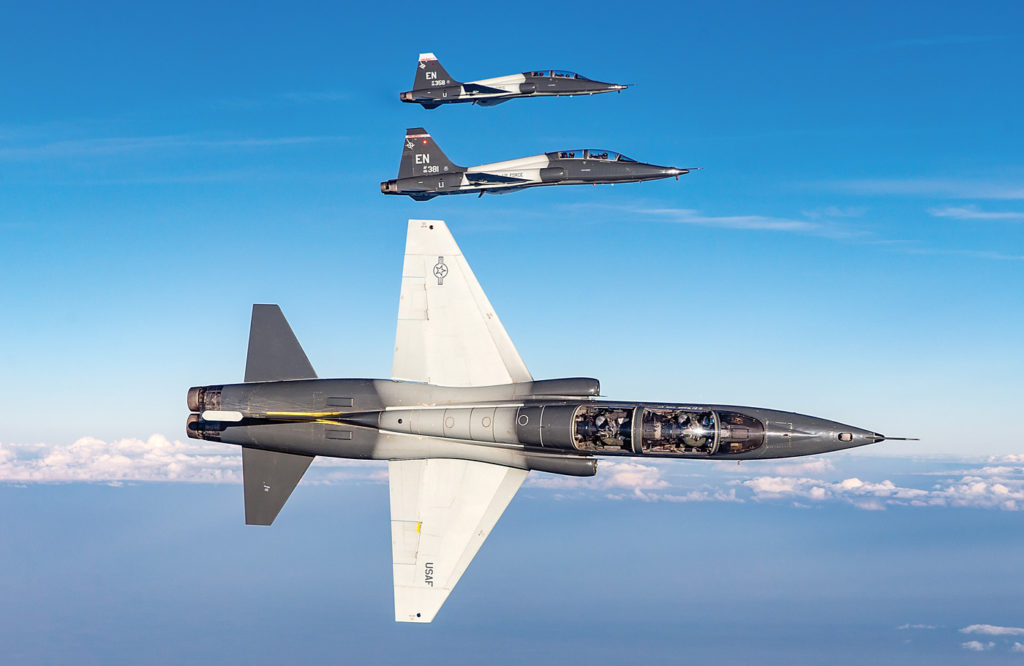
Older planes and high hours mean greater maintenance requirements and fewer aircraft available on the flight line. By increasing the yearly ENJJPT contingent, the RCAF can lighten the load on the Hawk without having to reduce annual fighter pilot production.
The increase in students heading south also comes with a corresponding increase in Canadian instructor pilots. Whereas historically the RCAF would send an instructor to act as the senior national representative along with one additional instructor pilot (IP), currently there are two additional IPs–one instructing on the T-38 portion of the UPT syllabus and one instructing on the IFF course. Canada plans to continue sending three instructors in total as long as the student enrollment stays at its current elevated rate, as IP contribution is generally proportional to student loading.
EQUAL, BUT DIFFERENT
The vast majority of newly-winged RCAF pilots streamed for fighters stay at 15 Wing Moose Jaw for their initial jet training. There, they join Dragon flight, which is their home for NFTC’s Phase IV transition course on the CT-155 Hawk.
This course is designed to teach students to fly the Hawk proficiently, much like their earlier courses on the Harvard. Upon completing their stay with Dragon, pilots then move on to 419 Tactical Fighter Training Squadron to fly NFTC Phase IV, known as Fighter Lead-in Training, or FLIT. FLIT is all about learning to fly the Hawk as a weapons delivery platform, in both the air-to-air and air-to-ground capacity. The aim is to get students ready to move on to 410 Tactical Fighter Operational Training Squadron, where they’ll get their first shot at the CF-188.
Students who find themselves at Sheppard flying the T-38 follow a similar structure, first learning to fly the T-38 on the UPT phase of ENJJPT prior to receiving their USAF wings, and then learning to fight it on the IFF course. The IFF course at ENJJPT has various streams tailored to the roles of the front-line fighters that students will eventually find themselves in depending on their home nations’ fleets. Canadian pilots go through Track B, which focuses on the type of multi-role flying to which the CF-188 is ideally suited. Air-to-air and air-to-ground specific IFF tracks also exist for countries that fly fighters specializing in those areas.
While ENJJPT and NFTC do diverge in the order in which certain fundamentals are taught, by the end of each their graduates will have covered the same material, including clearhood flying–or ‘contact’ as it’s known at ENJJPT, instrument flying, basic and advanced two-ship formation, four-ship formation, low-level navigation, basic fighter manoeuvres (BFM), air combat manoeuvring (ACM), close air support (CAS), and air-to-ground weapons delivery.

By the time they get to 410 Squadron, there will be no discrepancy between the training that an ENJJPT pilot and an NFTC pilot have received, putting both groups on equal footing as they start their Hornet training.
But while ENJJPT and NFTC may cover the same course material, that doesn’t necessarily mean that the two courses offer the same challenges or produce identical pilots.
“The T-38 itself is more challenging to fly than the Hawk,” noted Maj Phillipe Turcotte, the Canadian senior national representative. “It’s a more complex machine–afterburner, two engines–so it expands your horizon a little bit more. It’s an old aircraft so it’s not as easy to fly. It’s not very forgiving at low speed. Around the landing area, it’s pretty sporty. So, I think the difficulty level is maybe a little bit higher here because of that.”
Turcotte also explained that the T-38’s U.S. origins can help smooth the transition for pilots moving on to fly the Hornet, but that the Hawk offers its own unique benefits as well.
“[The T-38] is an American aircraft, so the design flows really easily to the F-18,” he said. “Very similar cockpit, symbology is very similar, versus the Hawk, which may be a little bit more of an adaptation when you get to the F-18. The Hawk is a more modern flying platform, so a bit easier to fly, but it flies a bit more naturally as well. I don’t think it’s a disadvantage to be easier to fly; I think you can do some different manoeuvring with the Hawk that we cannot do with the T-38.”
In addition to the benefits the T-38 provides, Canadian ENJJPT students gain some unique experience thanks to the program’s location and structure. Turcotte identified three major areas that he felt were notable examples of how training at Sheppard benefits Canadian participants.
The first, and potentially most obvious, is the international nature of the program.
“The vision of ENJJPT and one of the missions of ENJJPT is to build partnerships, and that’s one thing they do at a really young state in their career,” said Turcotte. “Nowadays with Maple Flag, Red Flag, all those multi-national exercises, plus all the coalition operations right now, there’s a significant chance that in a few years down the road, maybe just two, three years, they’re going to be working in a squadron, flying with American F-16s, and, ‘Oh, there’s a guy that I was at ENJJPT with.'”
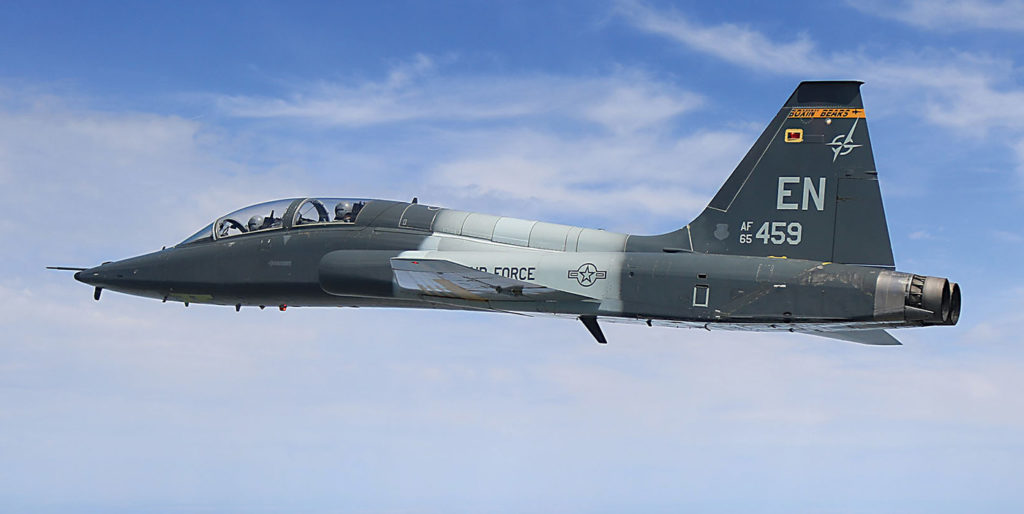
Turcotte also believes the quick pace of training is a major upside to training in Texas, comparing Sheppard to Moose Jaw and its harsh Prairie winters. “The course is really challenging and fast-paced, so it prepares you really well for the next phase of training. The weather here is excellent throughout the year, so once you start flying, it’s non-stop. So that’s a different pace than we’re used to in Canada with the bad weather, where sometimes you’re only flying once or twice a week.”
Finally, Turcotte cited the exposure to new flying environments as a unique experience that ENJJPT students can carry into their initial Hornet training at 410 Squadron. “They’re learning one more environment compared to staying in Moose Jaw. They’re still going to go to Cold Lake, but they’ll be used to flying U.S. procedures, which we do quite a bit of with the F-18,” he explained. “Because for the students that go from flying the T-6 in Moose Jaw, the only change from Phase 3 to phase 4T is the machine, and not really the procedures. Everything is the same, the environment is the same. Here, at the same time, the change is not only the airfield, but the rules around the airfield, the communications, some of the ways we fly are a bit different. It’s never a very big difference, but they’re enough and there are enough of them in numbers to make it more challenging.”
While these benefits all specifically apply to the pilots’ development as they progress through their flight training, the benefits to the RCAF as an organization are clear as well. The Air Force is only as strong as its leaders, and exposure to the unique interoperability and officer development opportunities that an international exchange like ENJJPT provides can only help ensure a deeper, more well-rounded corps of young officers.
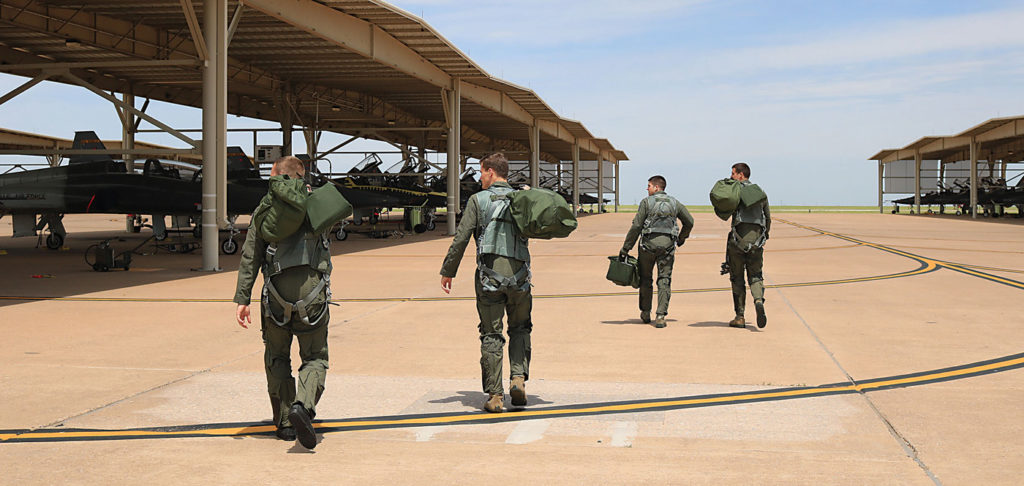
GRASPING THE TALON
The T-38 Talon is a fighter lead-in trainer that first entered service in March 1961. That makes it a similar vintage to the RCAF’s CT-114 Tutor, which first flew in 1960 and, aside from the famous red and white jets flown by the Snowbirds, was retired from service as a training aircraft in 2000.
Unlike the Tutor, the T-38 is still hard at work around the USAF, with 546 jets still actively employed. The Air Force’s T-X program is currently looking for a replacement more suited to getting pilots ready for fifth generation fighters and beyond, but it’s a testament to these planes that they’re still being successfully employed in large numbers so many decades after they were designed and built.
That isn’t to say that ENJJPT’s fledgling fighter pilots are flying around in the same jets that their grandparents’ generation learned to fly on. The current T-38 fleet being used at ENJJPT is composed of C-models, with some significant upgrades installed beginning in the early 2000s. The airframes are the same–no new T-38 airframes have been produced since 1972–but engines and avionics have been revamped. Today’s C-model features a propulsion upgrade that improves engine reliability and increases thrust at low altitudes. The avionics were also modernized with the addition of a head-up display (HUD), glass multi-function displays, a GPS, traffic collision avoidance system (TCAS), and more.
With a maximum speed of Mach 1.3 at altitude and Mach 1.08 at sea level–or approximately 1,306 kilometres per hour–the T-38’s most notable feature is its speed. There are only a small handful of supersonic jet trainers currently in operation around the world, and the T-38 is the only one flying for a Western air force. That means the NATO pilots that head to Sheppard to participate in ENJJPT are the only ones out of all their peers that will break the sound barrier before they get to a front-line fighter (at least in level flight). An ENJJPT pilot’s ability to push the T-38’s throttles past MIL power and into afterburner is sure to be a source of at least a little jealousy for other pilots flying subsonic lead-in trainers.
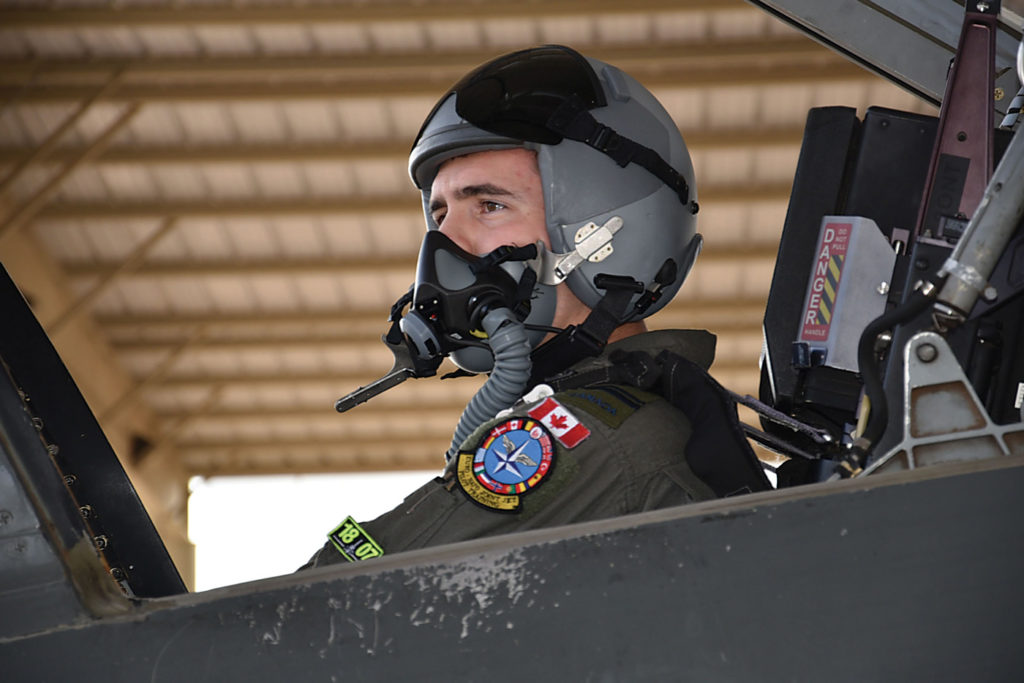
That speed can mean a huge adjustment for the student pilots. “Initially moving on to the T-38 from the Harvard II, the speed at which things occur in the jet is considerably quicker, making it very easy to get ‘behind the jet,'” said Boettcher, the recent Canadian program graduate. “The T-38 is also the fastest-landing aircraft in the United States Air Force fleet, with our approach speed varying from 160 knots to 200 knots depending on configuration and fuel weight at time of landing, making for more challenging landings, at least at first.”
The T-38’s turning ability isn’t quite as impressive as its speed. The Talon has tiny wings and the jet is definitely at its most comfortable at higher airspeeds. Being optimized to fly fast means the T-38 needs to maintain higher speed in turns, and RCAF pilots flying the Hawk–with its better low-speed performance and combat flaps–hold a pretty decent edge in turn radius as a result.
The T-38’s two afterburning J85-GE-5 engines are also fairly fuel-hungry compared to the Hawk’s single Rolls-Royce Mark 871, and the T-38 falls well short of the Hawk in the range category.
Each jet certainly has its own unique strengths and weaknesses, and Turcotte made it clear that neither one is superior to the other, each offering different advantages to the pilots that learn on them, and each equally capable of getting those pilots ready to take on the CF-188.
TRAINING FOR THE FUTURE
From the Gulf War, to Bosnia, to Libya, and most recently Operation Impact in Iraq, there has never been a combat deployment of CF-188s in which the pilots and the RCAF didn’t work as one important piece of a larger international team.
The same holds true for Canada’s NATO and NORAD missions, where Canadian fighter pilots work and fly alongside American and European pilots regularly.

An 80th FTW T-38C, identifiable by the EN tail code and NATO marking, performs a touch-and-go with an F-15 Eagle and A-10 Warthog on the ramp in the background. Soren Nielsen Photo
Interoperability with allied nations is at the core of what the RCAF does for a living, and that’s especially true of the fighter force. With that in mind, there is no reason to think that the ENJJPT program won’t continue to be a valuable training option for Canada’s young fighter pilots long into the future. In addition to the world-class flight training they receive from the program’s corps of international instructors, the students also gain valuable exposure to environments outside of Canada and to working with partner nations in a setting very different from the ones they’ve become accustomed to in the Canadian training pipeline.
That unique experience can only benefit the small handful of RCAF pilots that head to Sheppard every year, helping to hone their skills as leaders in an international environment, and adding to their readiness to answer the call to arms when it eventually comes.
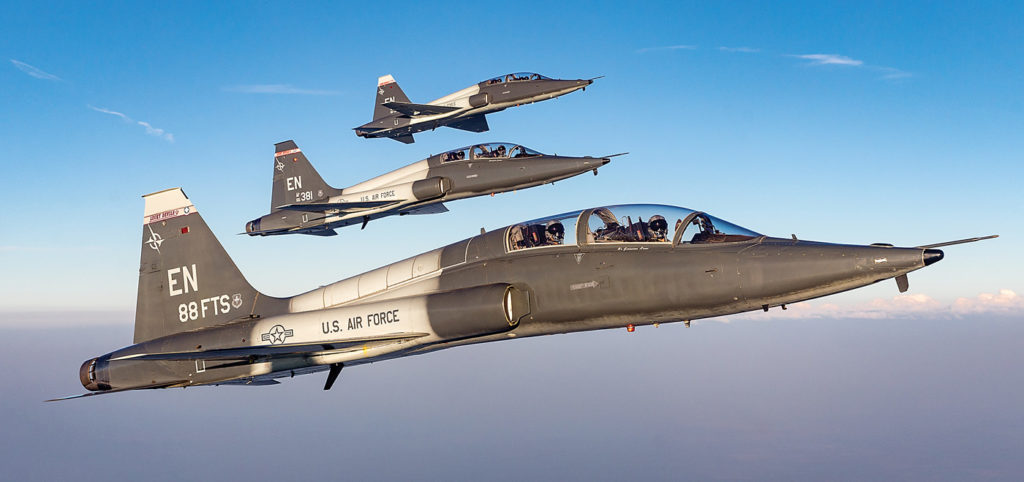
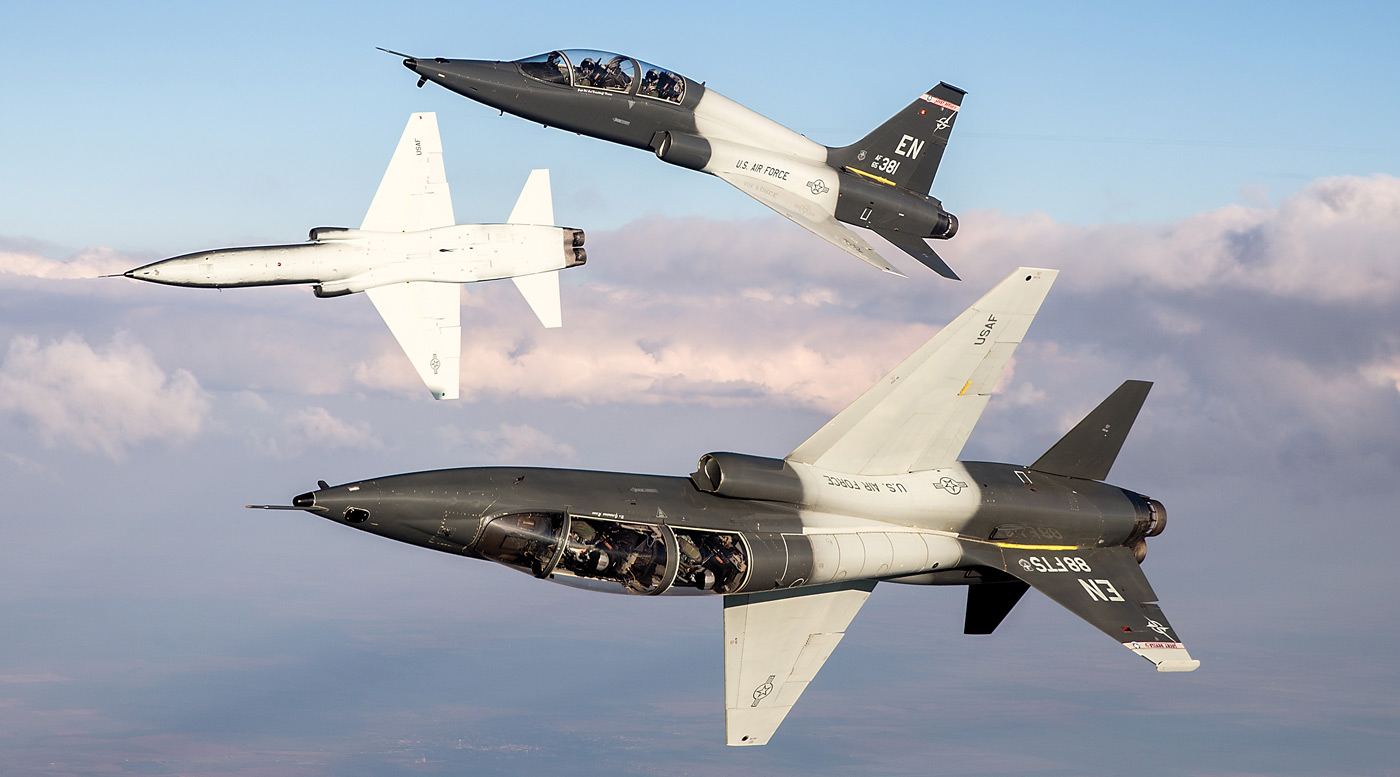

great article and quite informative. I can understand why the Grippen
may be the new Canadian trainer and potentially or new frontline fighter should Airbus/Saab agree to build the Grippen within Canada.
Hopefully the Canadian government will announce their intention to create a fighter aircraft manufacturing industry.
Please do a follow up on this possibility.
Really enjoyed your article!!!